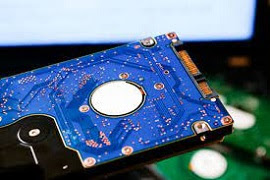Replacing Your Laptop's Hard Drive: A Step-by-Step Installation Guide:
.jpg)
In the digital age, laptop computers have grown into an integral part of our daily life. We utilize them for business, pleasure, communication, and a variety of other purposes. However, as we gather data over time, the storage capacity of our laptop can quickly fill up, resulting in sluggish performance and restricted functionality. This is where upgrading or replacing the hard disk in your laptop comes into play. This step-by-step installation tutorial will help you through the process whether you want to increase storage capacity, boost performance, or simply replace a failed drive. Why Should You Replace Your Laptop's Hard Drive? Before beginning the installation procedure, it's crucial to understand why you might wish to replace the hard disk in your laptop. There are a number of convincing reasons for doing so: Storage Capacity: If your laptop's hard drive is running out of capacity, upgrading to a larger drive will allow you to store more files, apps, and multime...
.jpg)

